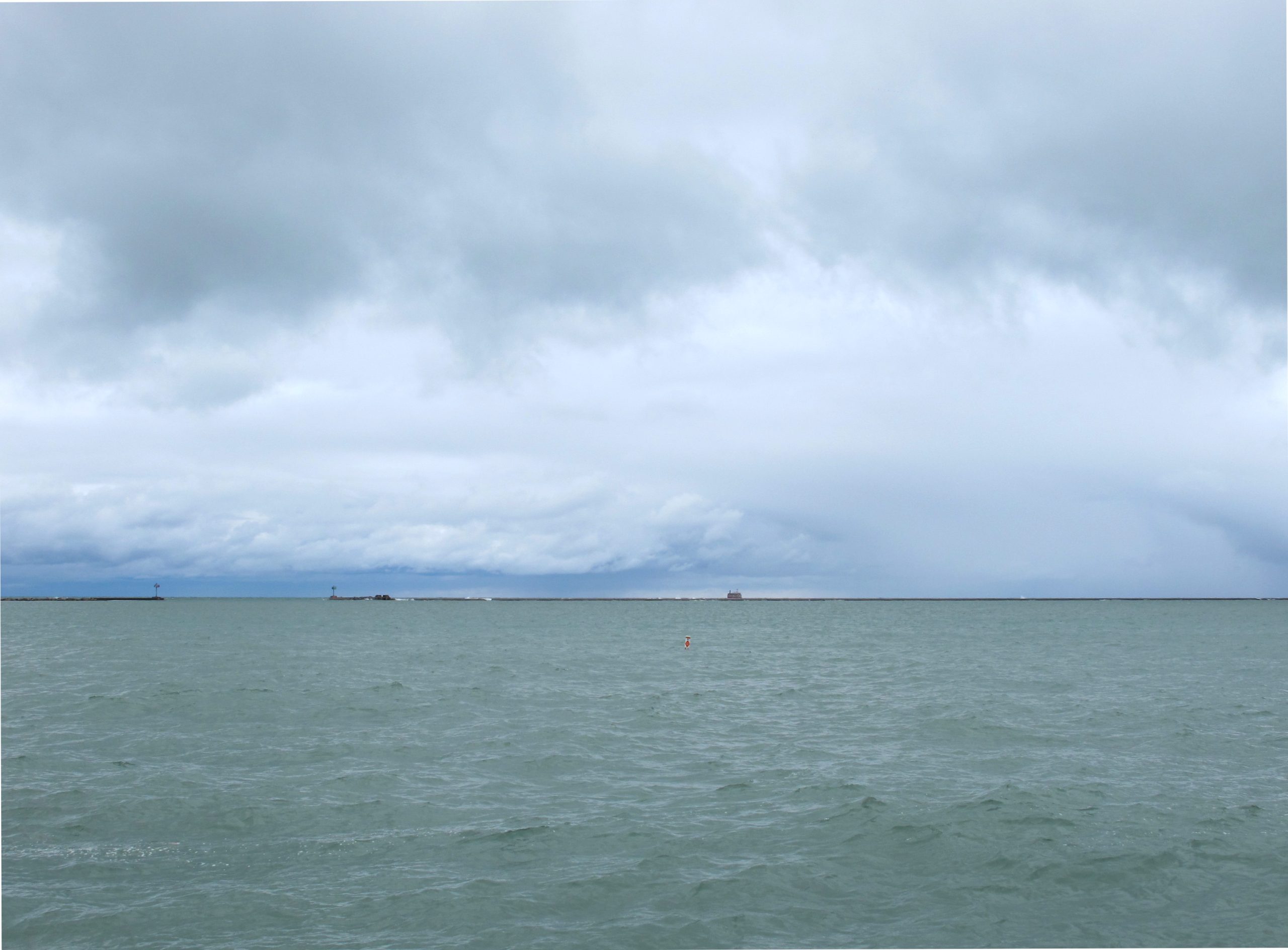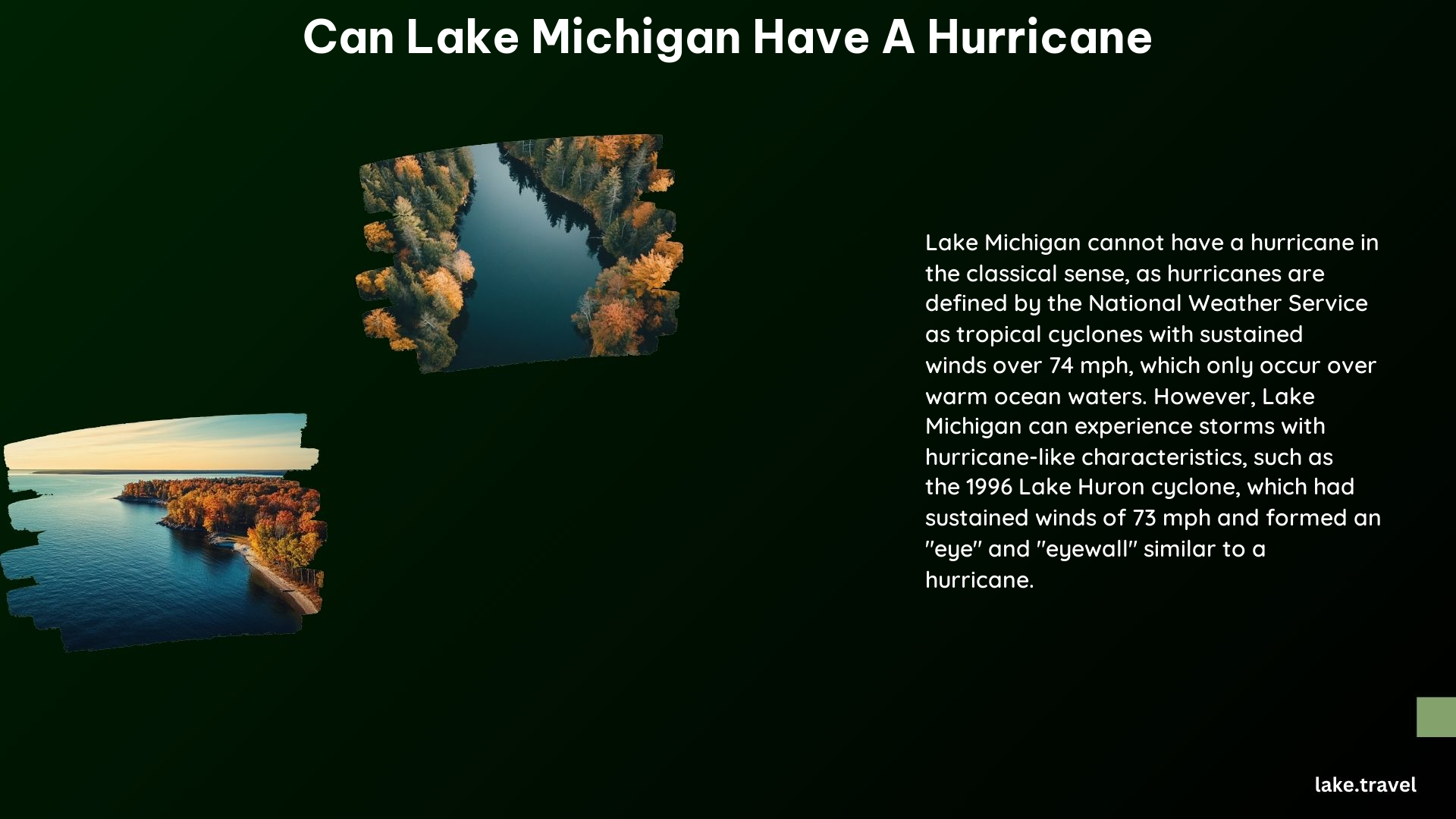Lake Michigan, part of the Great Lakes, is not typically associated with hurricanes. Hurricanes are tropical cyclones that form over warm ocean waters, while the Great Lakes are freshwater bodies located in the northern United States and southern Canada. However, there have been instances where storms with hurricane-like characteristics have formed over the Great Lakes.
The 1996 Lake Huron Cyclone

One notable example is the 1996 Lake Huron cyclone, often referred to as “Hurricane Huron.” This storm formed over Lake Huron on September 11, 1996, and rapidly intensified, reaching wind speeds of up to 73 mph (117 km/h), just shy of the 74 mph (119 km/h) threshold for a Category 1 hurricane. The storm displayed characteristics similar to a hurricane, including an “eye” and spiral bands, and caused significant flooding in the region.
Other Storms on the Great Lakes

In addition to the 1996 Lake Huron cyclone, there have been other notable storms on the Great Lakes that have exhibited hurricane-like characteristics:
- The “White Hurricane” of 1913: This severe blizzard killed 244 people and sank 13 ships. The storm had winds up to 90 mph (145 km/h) and waves reaching 35 feet (10.7 meters) high.
- Remnants of Atlantic and Gulf of Mexico Hurricanes: There have been instances where the remnants of hurricanes from the Atlantic Ocean and Gulf of Mexico have moved into the Great Lakes region, bringing strong winds and heavy rainfall.
Conditions Necessary for a Hurricane-Like Storm
For a hurricane-like storm to form on Lake Michigan, several conditions need to be met:
- Warm Water: The lake water needs to be warm enough to provide energy for the storm to develop and sustain itself. This is typically not the case for the Great Lakes, which are generally cold.
- Atmospheric Instability: There needs to be instability in the atmosphere over the lake, allowing for the formation of thunderstorms and convection.
- Low Pressure: A low-pressure system needs to develop over the lake, which can then strengthen into a cyclone.
Factors Limiting Hurricane Formation on Lake Michigan
While it is possible for storms with hurricane-like characteristics to form on Lake Michigan, there are several factors that make it unlikely:
- Colder Water Temperatures: The water temperatures in Lake Michigan are generally cooler than the warm ocean waters that are required for hurricane formation.
- Smaller Size: Lake Michigan is a relatively small body of water compared to the vast expanses of the ocean, which can limit the storm’s ability to intensify and sustain itself.
- Proximity to Land: The proximity of Lake Michigan to land can also limit the storm’s ability to intensify, as the interaction with land can disrupt the storm’s structure and energy source.
Conclusion
In summary, while Lake Michigan is not prone to hurricanes in the classical sense, storms with hurricane-like characteristics can form over the Great Lakes under specific conditions. The 1996 Lake Huron cyclone is a prime example of this. However, such events are rare and usually require a combination of unusual weather patterns and warm lake temperatures. The factors that limit hurricane formation on Lake Michigan, such as colder water temperatures, smaller size, and proximity to land, make it unlikely that a true hurricane will form on the lake.
References:
– https://www.reddit.com/r/weather/comments/xjf403/a_hurricane_once_almost_formed_over_the_great/
– https://wbckfm.com/hurricane-huron-1996/
– https://en.wikipedia.org/wiki/List_of_storms_on_the_Great_Lakes
– https://wkfr.com/hurricane-hit-michigan/
– https://www.weather.gov/dtx/dtxcane
